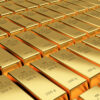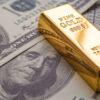Silver, as a “precious metal,” belongs to a select group of valued commodities. Given its unusual properties and rarity, this gorgeous white metal has long been in high demand. While the demand for this precious metal has been consistent, prices have been volatile.
Factors That Influence The Price of Silver
Understanding silver pricing patterns necessitates a thorough examination of a variety of variables. Accordingly, we have summarized below the ten price criteria that professional experts and informed silver investors use when deciding when to buy and sell silver.
While any one component may receive special attention at any given moment, it is critical to analyze all of them in context to comprehend both short-term price changes and long-term patterns.
Demand and Supply
One of the reasons silver is so precious is due to the demand-supply equation: supply is finite, but demand is continuous. However, the basic economic principle is that any actual or perceived increase or reduction in supply or demand will shift prices.
Technology
Many novel applications for silver take use of physical properties found solely in silver, making it nearly irreplaceable. In contrast, new technology is assisting in the replacement of silver in more routine uses.
New forms of aluminum alloys, for example, are suitable substitutes for several low-cost mirrors. The same may be said about the widespread usage of stainless steel utensils in place of traditional silverware in many families.
Nonetheless, rising demand from solar energy systems and other green applications is a net bullish driver for silver demands and pricing.
Macro Economic Trends
Silver, like gold, is regarded as a haven investment. This implies that when there is economic uncertainty, silver is thought to preserve its value better than fiat money and some other assets. When and if such economic worries become full-fledged crises, there is often strong upward pressure on silver prices.
On the other hand, a robust, healthy economy may reduce silver demand. While a dynamic economy increases demand for jewelry and industrial uses, it does neither pay dividends nor produce interest revenue.
Silver Scrap
Due to its light-sensitive properties, photography once consumed large amounts of silver. There is less need since non-silver photography has begun to dominate the sector. Consequently, there was a vast inventory of film stock that was recycled because of its silver content.
Another way this issue manifests itself is that rising prices lead to more silver coins, jewelry, and other goods being sold and melted down, adding to the silver market supply.
Inflation
The majority of economists, investors, and analysts are aware of how inflation sneaks up on portfolio value. Even nominal inflation that has accumulated over a long time is included in this.
On the other hand, historically speaking, silver has been viewed as a fantastic hedge against that inflation. Paper money will lose value due to inflation, but silver can safeguard against such declines in purchasing power.
Government Policy
Silver markets are still impacted by government policies and actions because of its history as an exchange medium. While gold receives the most significant attention as a reserve, banks all around the world acquire and trade silver bullion. National mints use a significant portion of the world’s silver supply by manufacturing bullion and coins.
Interest Rates
Since silver investments are not meant to generate a present return, many investors will choose interest payments above the long-term growth of silver assets. As a result, silver market prices, like the value of the dollar, often have an inverse connection with interest rate levels.
Gold Prices
The value of gold has historically been linked to the price of silver. In general, when the value of gold rises or falls, so will the price of silver.
US Dollar
As the world’s reserve currency, the US dollar has an inverse connection with the price of silver. A strong dollar has historically put pressure on the price of silver, according to silver market participants. Many clever investors look for moments when the US dollar is strong to balance their investments by purchasing at low prices.
Benefits of Investing in Silver
It’s reasonable, and even wise, for an investor to consider whether a specific item is a suitable investment. This is especially true for silver, which has a tiny market and lacks the seriousness of gold. There are, nevertheless, sound reasons to include silver in your portfolio.
Real Value
While bank deposits, treasury bills, stocks, bonds, and comparable financial instruments are excellent long-term investments, they are still essentially promissory notes. Because of behaviors such as printing money, they will be subject to significant devaluation.
Having silver bullion ensures that you have a finite and physical asset. Tangible silver will never be worthless, even under volatile market situations. Silver’s inherent and actual value will remain unchanged.
Cost-Effective
Silver is substantially less expensive than gold, yet it provides larger returns. Even when they are trending in the same direction, the silver spot price travels further than the gold price.
When silver prices continue to climb, you might expect a higher percentage gain. During a bull market, silver will outperform gold as a short-term speculative investment.
Inflation Hedge
Silver’s a secure commodity that may be used by investors to hedge against inflation and economic downturns.
Continued Use
Silver is commonly utilized in industrial sectors as well as an important financial commodity in portfolios. Because of its excellent conductivity and corrosion resistance, silver is used in many industrial appliances. As a result, silver investment should continue to rise while the global economy develops.
Portfolio Diversifier
Silver holds its value over time, providing protection for your portfolio against poor market performance. It is hardly unexpected that silver has traditionally skyrocketed amid stock market crises.
Having silver in your portfolio can help you recover from stock exchange losses and provide a fallback source of cash to reinvest in inexpensive stocks once the economy begins to recover.
Silver Investments
You must grasp the distinction between investment and speculation, as well as the distinction between short and long-term investments. Markets, by definition, react quickly to short-term causes, such as those mentioned above.
These quick shifts are essential to end users and speculators. Most long-term investors, however, are more concerned with examining the patterns that these characteristics reveal.
The key to taking the long view on silver investments is to appreciate the protection it provides, to seek out bargains where feasible, and to be certain that the overall value of your silver holdings can grow significantly in the years ahead.






